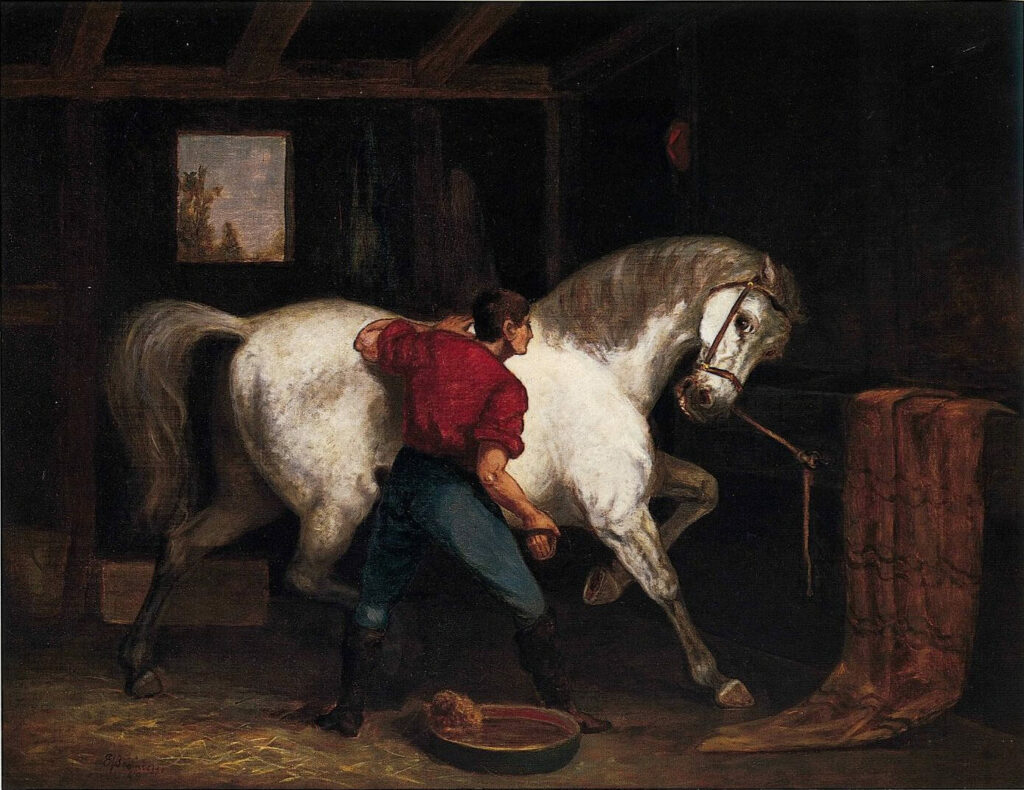Set in a stable, this tense scene shows an agitated white horse resisting a groom, its front left leg raised in a sign of protest. The man has one hand firmly placed on the animal’s back while the other grips a brush. As the work’s title indicates, the obstinate horse belonged to the Governor of Rhode Island, William Sprague IV, who came from a prominent political family that included important patrons of Bannister’s. The painting reflects the popularity of animal depictions in the mid-nineteenth century, partly as a result of masterful works created by the renowned French artists Rosa Bonheur (1822–1899) and Théodore Géricault (1791–1824). Influenced by this trend, Bannister explored this genre in two other paintings that he created in the same year as Governor Sprague’s White Horse.
Artist and Abolitionist
-
Edward Mitchell Bannister, Governor Sprague’s White Horse, 1869
Oil on canvas, 58.4 x 76.2 cm, Collection of the Rhode Island Historical Society, Providence.
